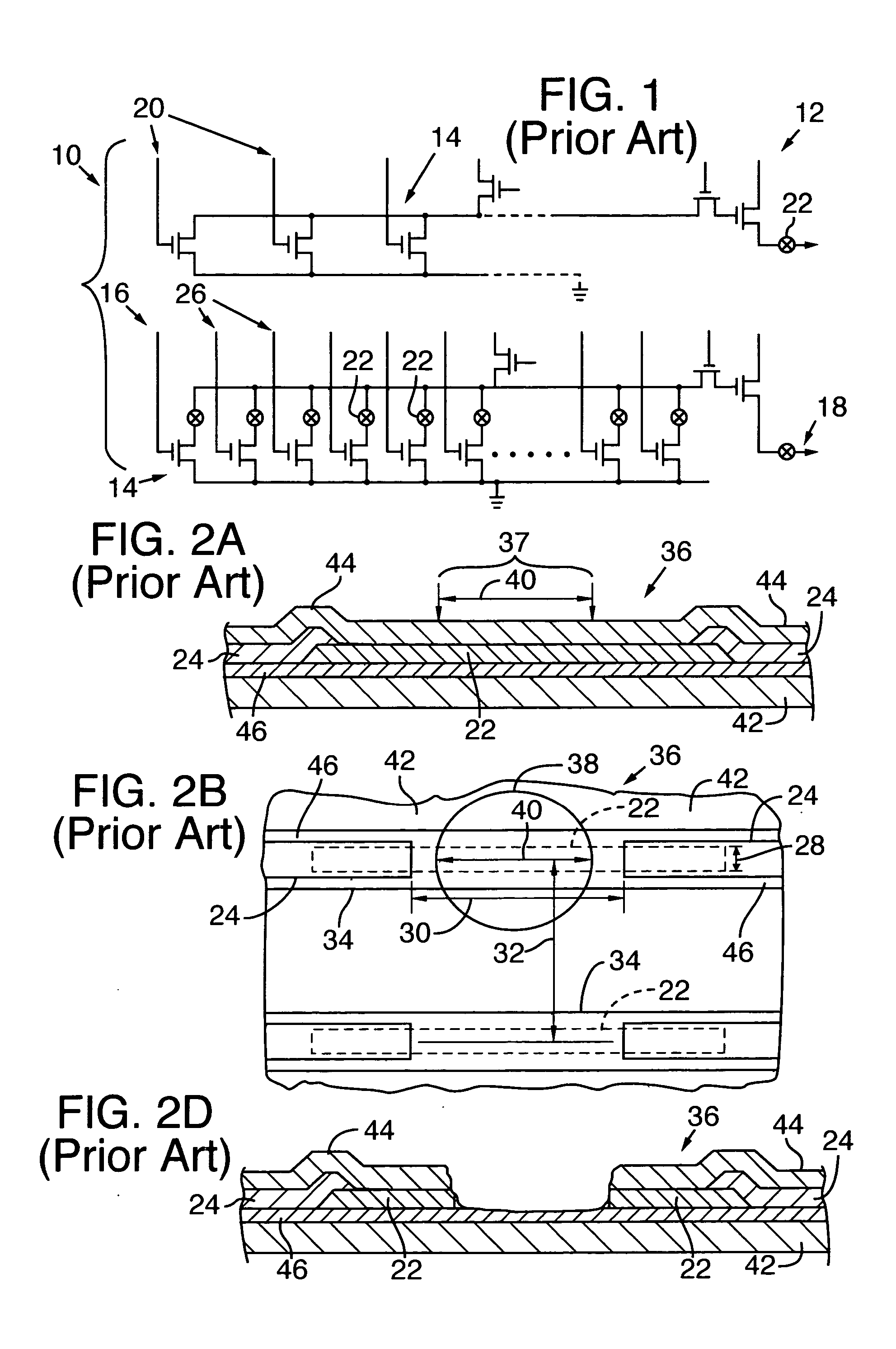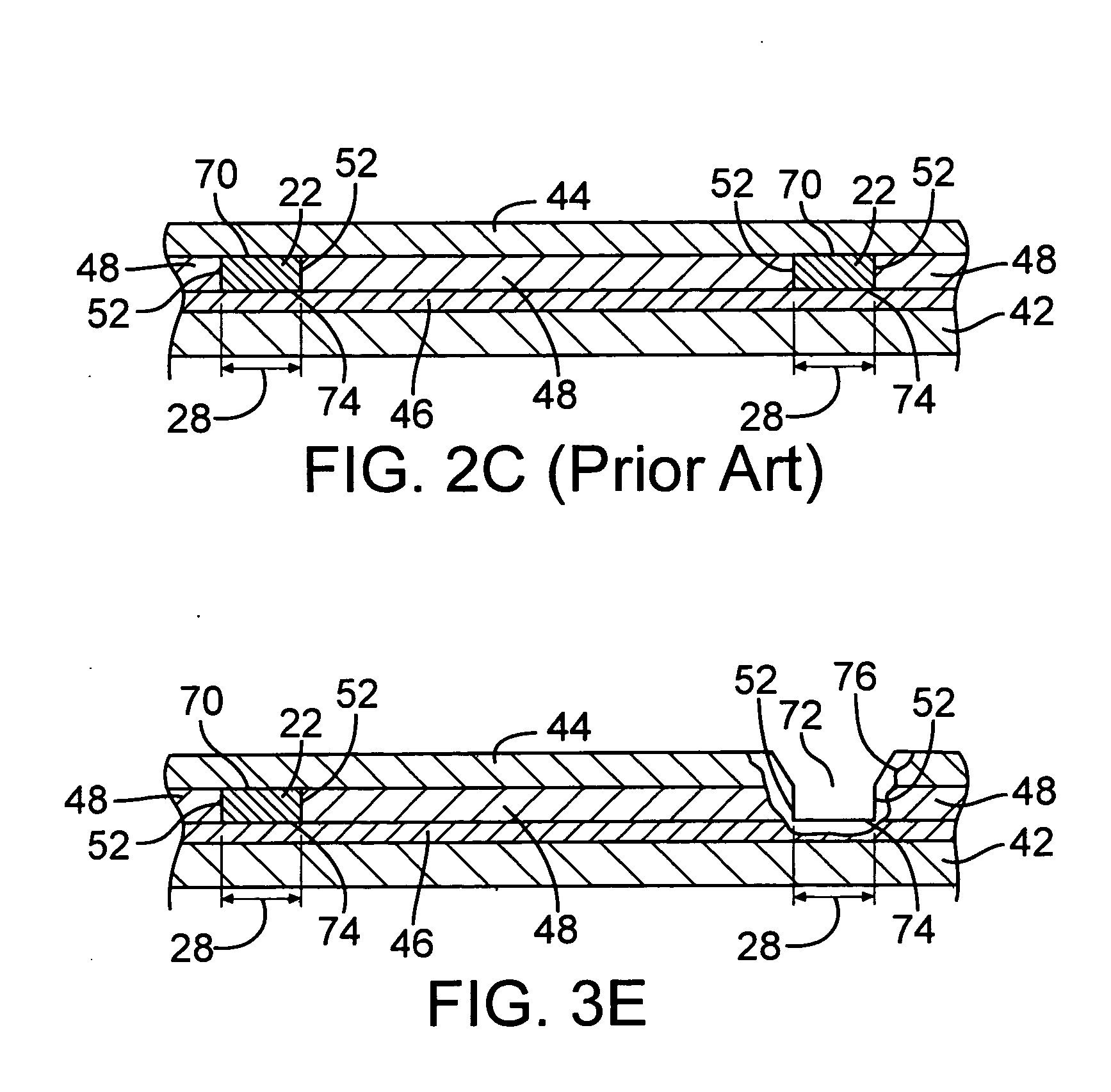Methods of and laser systems for link processing using laser pulses with specially tailored power profiles
a laser system and laser technology, applied in wavelength-division multiplex systems, semiconductor/solid-state device details, manufacturing tools, etc., can solve the problems of ever-shrinking link dimensions, imposing a great risk of damaging the silicon substrate, and small laser beams, so as to improve the processing quality of removal
- Summary
- Abstract
- Description
- Claims
- Application Information
AI Technical Summary
Benefits of technology
Problems solved by technology
Method used
Image
Examples
first embodiment
[0043] With reference to FIG. 4A, in a first embodiment, special tailoring of the laser pulse power profile is accomplished by combining two laser pulses from two separate laser rails 110 and 112. Laser rail 110 generates a shorter laser pulse 114, shown in FIG. 4B, and laser rail 112 generates a longer laser pulse 118, shown in FIG. 4C. The synchronization of or delay time (td) between laser pulses 114 and 118 is controlled by synchronizing electronics 120. Laser pulses 114 and 118 are combined by a beam combiner 130 after laser pulse 118 reflects off a mirror 131 and propagates through a waveplate 132 for polarization control purposes. FIG. 4D shows a combined laser pulse 134 that has a final power profile with a significant power spike 136 preferred for link processing. The total laser pulse width of combined laser pulse 134 can be either the sum of the widths of laser pulses 114 and 118 or the width of laser pulse 118, depending on the delay time between laser pulses 114 and 118...
second embodiment
[0046] With reference to FIG. 5A, in a second embodiment, an E-O gating device 150 shapes the power profile of laser pulses propagating from a diode-pumped, Q-switched solid state laser 152. Laser 152 delivers multiple laser pulses 160 (one shown in FIG. 5B), each with a relatively long laser pulse width at full width, half maximum (FWHM). The FWHM pulse width can be, for example, about 30 ns to 50 ns. Laser pulses 160 propagate through E-O gating device 150. The output laser pulse power profile depends on the width and shape of a drive voltage pulse 162 delivered from drive electronics 164 and the delay time between laser pulse 160 and the drive voltage pulse 162 applied to E-O device 150. The output laser pulse can have an upwardly, substantially linearly inclined (increasing) power profile, as shown for laser pulse 166c in FIG. 5C or a downwardly, substantially linearly inclined (decreasing) power profile with a higher peak at the very beginning of the laser pulse, as shown for l...
third embodiment
[0047] With reference to FIG. 6A, in a third embodiment, a laser 200 is composed of an injection laser 202 followed by an amplifier 204. Injection laser 202 can be a diode laser having a fast response time and delivering laser output at a laser wavelength that matches the gain spectrum of amplifier 204. FIG. 6B shows a specially tailored drive current pulse 206 delivered from driving electronics 208, and FIG. 6C shows that an injection laser output pulse 210 propagating from injection laser 202 replicates the profile of drive current pulse 206 as a result of the fast response capability of injection laser 202. Injection laser output pulse 210 is delivered to laser power amplifier 204, which is operating in an unsaturated state to amplify injection laser output pulse 210 and deliver an output pulse 212 without introducing significant distortion of the tailored laser pulse power profile, as shown in FIG. 6D. Output pulse 212 is relatively flat after the occurrence of the power spike a...
PUM
| Property | Measurement | Unit |
|---|---|---|
| rise time | aaaaa | aaaaa |
| rise time | aaaaa | aaaaa |
| laser energy | aaaaa | aaaaa |
Abstract
Description
Claims
Application Information
 Login to View More
Login to View More - R&D
- Intellectual Property
- Life Sciences
- Materials
- Tech Scout
- Unparalleled Data Quality
- Higher Quality Content
- 60% Fewer Hallucinations
Browse by: Latest US Patents, China's latest patents, Technical Efficacy Thesaurus, Application Domain, Technology Topic, Popular Technical Reports.
© 2025 PatSnap. All rights reserved.Legal|Privacy policy|Modern Slavery Act Transparency Statement|Sitemap|About US| Contact US: help@patsnap.com



